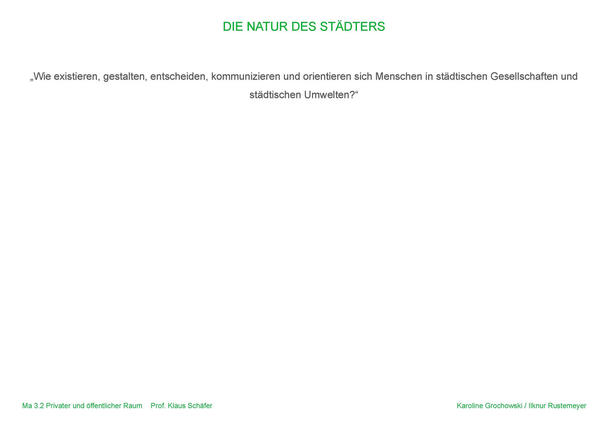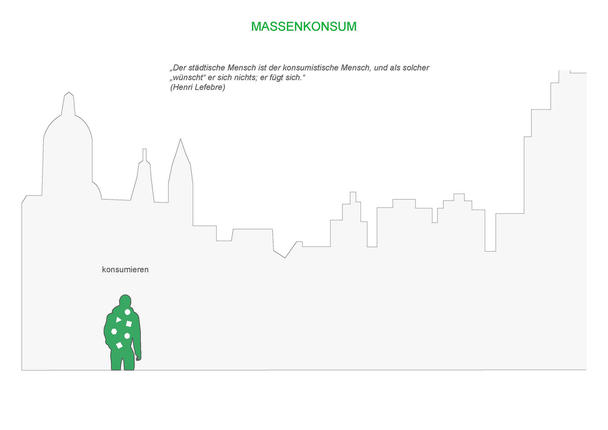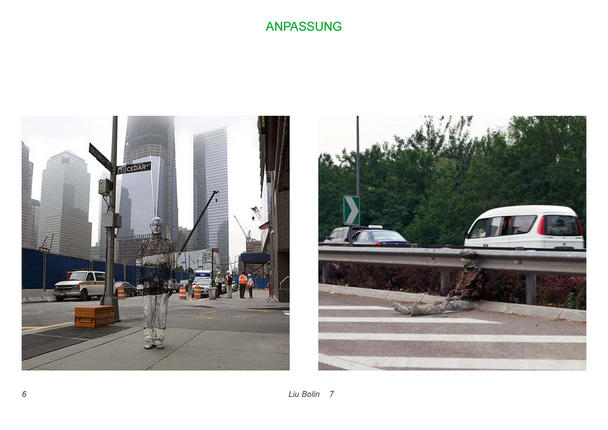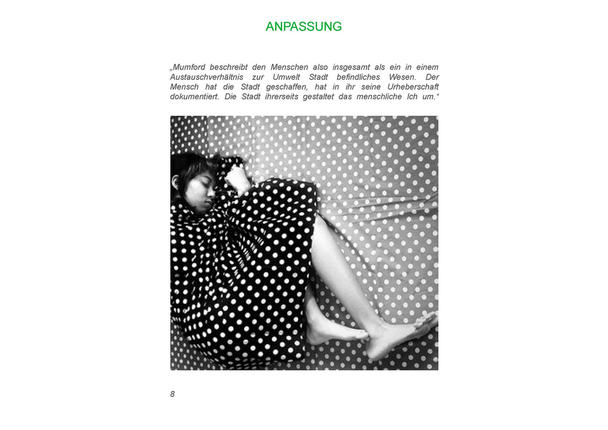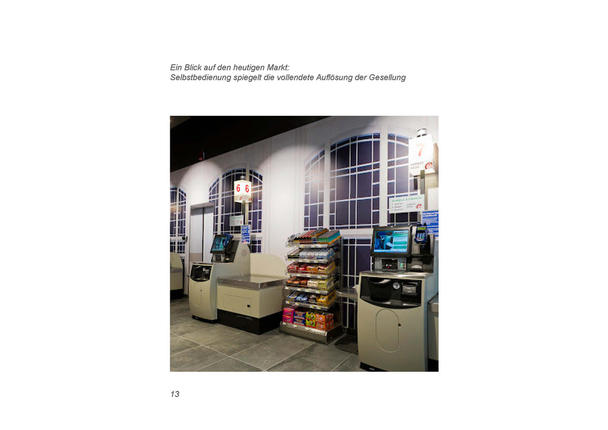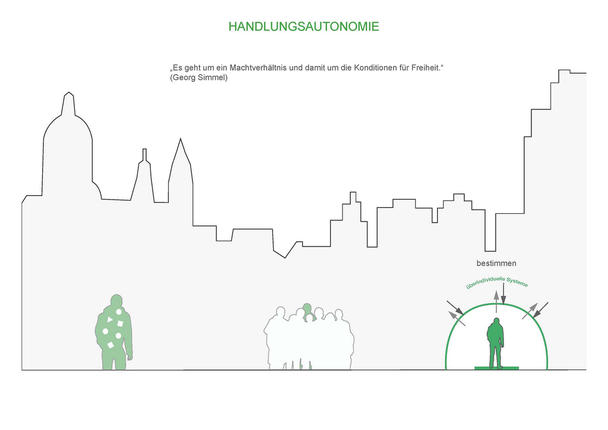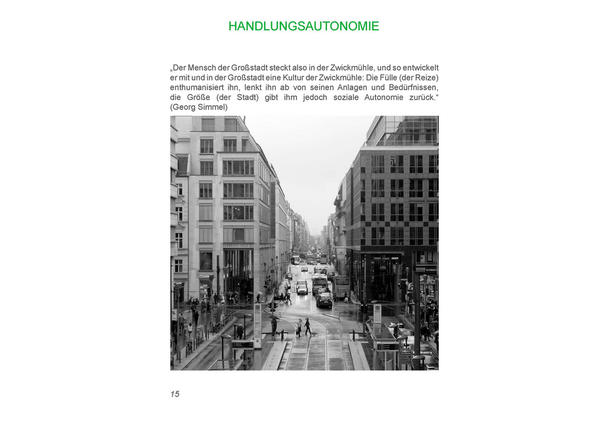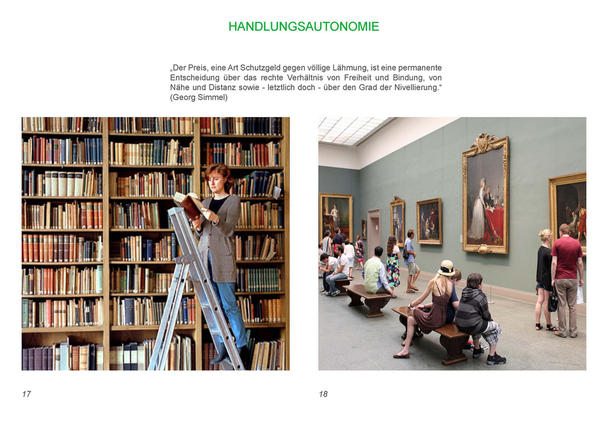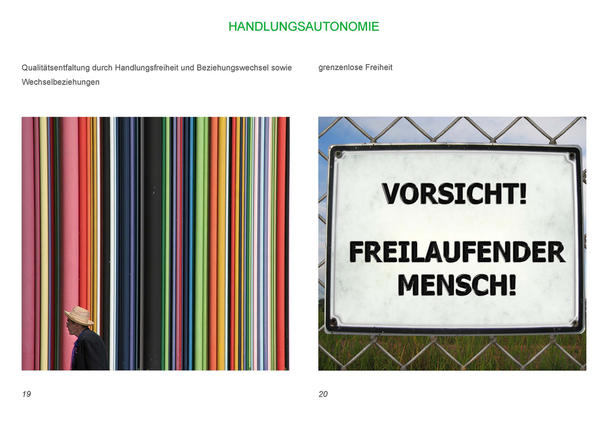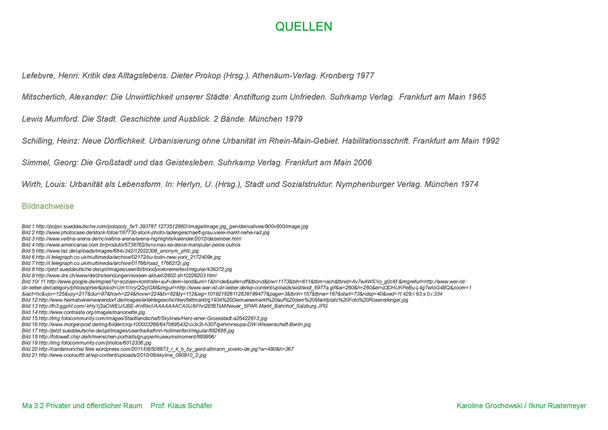Ilknur Rustemeyer, Karoline Grochowski, 06.03.2013
This presentation is about the city as a perceptual and social place for human beings.
It is based on the chapter „Die Herrschaft der Vorstädter“ of the cultural anthropological habilitation dissertation „Neue Dörflichkeit. Urbanisierung ohne Urbanität im Rhein-Main-Gebiet“ of/ from Heinz Schilling, professor for Cultural Anthropology and European Ethnology, at the University Frankfurt in 1992.
Human beings and their surrounding world are in a close interrelationsship. When we think of a city as the natural environment of humans it can be characterised as a place of money and mind, exchange of opinion and the interrelationship between private and public space. These characteristics distinguish a major city from rural cities or suburbs: Whereas the latter are defined by factors like traditions, social norms, safety and also social supervision, a big city is rather marked by anonymity.
The central question is how can people appropriate a living environment in an urban context? How do they exist, create, decide, communicate and orientate in urban societies and urban living environments? Do they act on their own or in groups, by social norms or as one may see fit? A city is always a place of clash of ideas, opinions and interests and demands solidarity. Therefore, there are three ways to appropriate individual environment: participation, adaption and freedom of action.